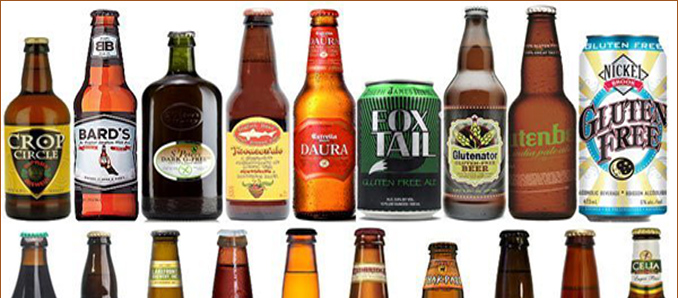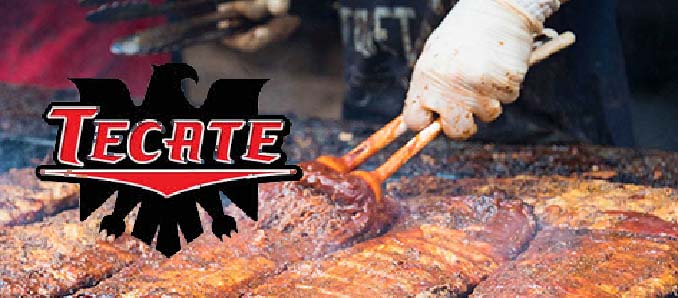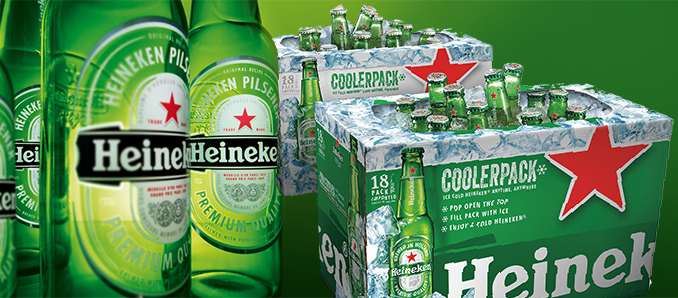 Gluten-Free Beer is very different from standard beer for many reasons besides taste. You may or may not be aware that with regular beer you are already ingesting barley, wheat, oats, kamut, spelt, triticale or rye. But as barley and other grains are replaced, exactly what properties do the ‘new’ grains have? Why haven’t manufacturers been using them all along, and are they healthier for you? If these questions puzzle you, then read on my dear beer drinking friend.
Gluten-Free Beer is very different from standard beer for many reasons besides taste. You may or may not be aware that with regular beer you are already ingesting barley, wheat, oats, kamut, spelt, triticale or rye. But as barley and other grains are replaced, exactly what properties do the ‘new’ grains have? Why haven’t manufacturers been using them all along, and are they healthier for you? If these questions puzzle you, then read on my dear beer drinking friend.
As beer is often made from wheat and barley and these two grains contain gluten, gluten free beer manufacturers need to use substituted grains. The first thing a gluten free beer brewer needs to consider is whether they intend on making a pale or dark lager. The answer to this is that roasting grains for the longest time tends to produce the darkest beers.
One of the most regular grains people use is buckwheat, sorghum and millet as the base grain. The other gluten free grains that can be used are; rice, maize, corn, sunflower; amaranth, flax, quinoa, teff, wild rice, soybean, ragi, and rape.
The next consideration is how to perform the starch conversion. In regular beer making, barley is MALTED so that the enzymes convert the starches into fermentable sugars (which then can are distilled and create alcohol). Similarly, gluten free grains need to be malted and typically brewers add amaylase enzymes to the mash to convert the sugars.
Flavour (and so different beer types) are further created by one of three processes: blending gluten free grains together, adding sugars or roasting the grains.
The reason that sugars are added to gluten free grain beer is that they often have less original sugar content than barley. In gluten free beer brewing some of the flavour options (sugars) are provided by the inclusion of: honey, corn sugar, juice, molasses or exotics like Belgian candy sugar.
Roasting grains
This will always create a darker colour beer and often a deeper taste. The process involves grinding the gluten free grain of your choice into a powder adding an enzyme tablet, adding your sweetener and water until the mixture becomes a dough, then baking it until it is your required colour darkness. Once this is reached the baked mixture is then broken up and added to the mash.
Creating beer head
The beer head is actually created by the gluten in normal wheat grains. To achieve a head in non gluten beer grains manufacturers need to substitute the gluten protein with something like a soy protein. This can be done by adding tofu to the mash.
Note that gluten free beer can and should still have hops added to it, which will give it the bitter taste.
One large warning on home brewing gluten free beer is that some brewing yeast manufacturers actually culture their product in gluten containing malt – so you should check that the yeast ingredients are certified as being gluten free.
CHARACTERISTICS OF SUBSTITUTE GRAINS
Buckwheat is a 2-4 foot plant cultivated unlike most other grains which are grasses. The plant has broad, spreading leaves; it also has lacy white flowers. Major suppliers are Japan and Canada. It has a distinctive nutty flavour that is often used in waffles and breads. It also has high fat content as well as high fibre and protein.
Sorghum: is one of the top five world cereal crops and along with corn (another top five grain) – it is gluten free. Sorghum originates from Africa which is still the global largest producer. It is an extremely drought tolerant grass that in original form grows to 2m tall, though in most countries the dwarf varieties are grown as higher efficiency crops. In the US, like buckwheat, it is usually grown for animal feed. For a beer ingredient the regular grain is used however a sweet sorghum is also grown which is boiled down to create packaged sugar. Regular sorghum is said to taste bland (like wheat) or slightly sweet.
Millet: is a collective term for a variety of grasses that produce small, rounded seeds. The five commercial varieties are: foxtail, browntop, pearl, proso, and barnyard. Millet is popular in Asia where its survival against heat and poor soil make it a major crop. Millet has many vitamins and protein and grows quickly with up to three crops per year. It is pest resistant which lends it to organic farming though there is fungus susceptivity. Millet has a fairly mild nutty flavor, which can be enhanced by lightly toasting.
Maize: is similar to rice, wheat and barley in its genetics, however unlike the other grains it needs is not self sowing because maize kernals are locked inside of the tough husk. It is also one of the few grains created by mankind (genetically engineered). Maize flour comes from ground corn kernels. In South America and the Caribbean. It is said to contain the same taste and texture as regular wheat grains, so it may be an ideal replacement.
Sunflowers seeds are often pressed to create sunflower oil. However the seeds tend to need a commercial de-huller to enable oil to be expressed from them. The seeds yield 40% oil which is 70% polyunsaturated (one of the healthiest seeds around). Without preservatives and other additives used in its extraction process, it is said to have a deliciously yet subtly nutty in flavour.
Amaranth was originally associated as being a core part of the Aztec sacrifice ceromony. When the conquistadors arrived they promptly banned the grain in an attempt to eliminate sacrifices. It currently is used by several south American cultures to make several types of unique drinks such as atole in Mexico and in fermented form Peruvians make it into Chicha or beer. Its red colour is also used as a food colorant for maize and quinoa. The leaves of the plant are often used as a vegetable in their own right. There are approximately 60 species of amaranth a bushy plant that grows 5 to 7 feet. Amaranth seed is high in protein (15-18%) and contains good amounts of lysine and methionine, two essential amino acids not often found in grains. It is high in fiber and contains calcium, iron, potassium, phosphorus, and vitamins A and C. The Amaranth flavor is mild, sweet, nutty, and malt like and with its ease of growing it is growing in popularity around the world.
Flax seeds have a pleasant, nutty taste. The seeds can be stored for several years however once the hard to crack husks are penetrated and the kernel ground, care must taken so that any oil liberated does not go off. Flax seed also contains phytoestrogen, which is a plant estrogen and for those sensitive to hormones, large ingestion of the seeds (and probably its flour) should probably be avoided.
CONCLUSION
The beer brewing process can be complex at the best of time, and gluten free brewing adds a few more steps. However with the vast variety of grains, sugars and roasting options available there exists a tremendous opportunity for home brewers to make some very distinct and original brews. In Australia there are few national gluten free brewers and just as few imported varieties. The low diagnosis of celiac disease means the demand and supply of this product is currently limited. When it is available, the low supply and cost of input grains usually make gluten free beer more expensive than more regualar high volume beers.
With brewers looking for the edge by introducing new beer classes (look at the ‘cold’, ‘low carb’ and honey varieties) it may only be a matter of time before they consider using different grains which may hopefully be gluten free ones , and therefore make gluten free beer by default.
, and therefore make gluten free beer by default.








